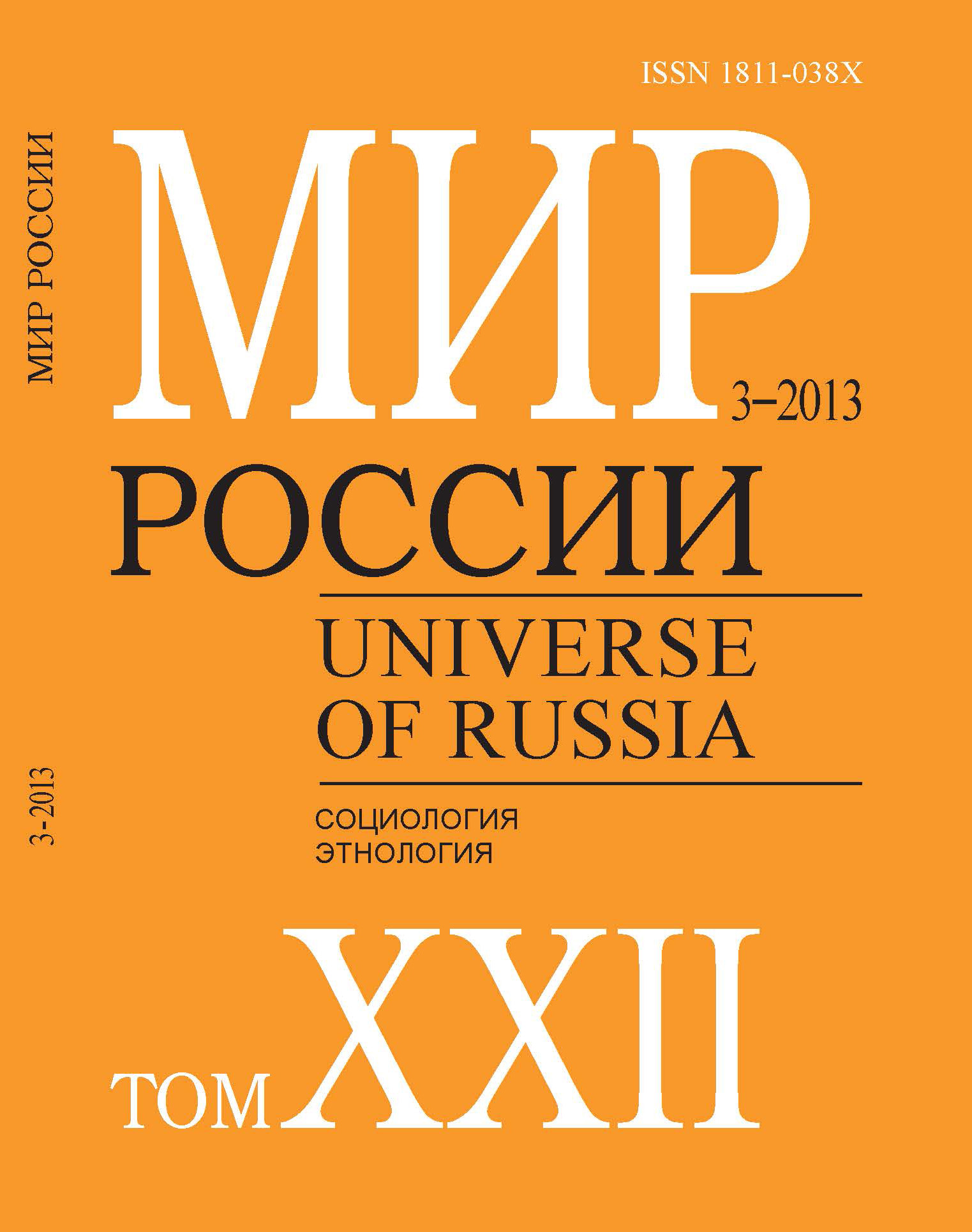“Locals” and “Aliens” in Russian Provincial Towns
Abstract
Yuri Plusnin — Professor, Department of Public Administration, National Research University “Higher School of Economics”. Address: 20, Myasnitskaya St., Moscow, 101000, Russian Federation. E-mail: juri.plusnin@gmail.com
This article is based on empirical social studies of local communities in Russia. Such communities are located in provincial towns, but the territory they occupy can usually be perceived in wider boundaries, particularly, within the borders of former counties and modern administrative districts. In this research, we study only one component of provincial social structure: the differentiation in categorical opposition between “locals” and “aliens” (or “insiders” and “outsiders”).
The first task was to determine the necessary and sufficient criteria for the recognition of individuals or groups as “us”, or “insiders”. These criteria are: (1) duration of communal life, or cohabitation, (2) co-residence (neighborhood), (3) relationship and interaction among “insiders”, “locals”, (4) reciprocal altruism (relations of reciprocity), (5) local privileges and control over their distribution, and (6) regulatory identification with “us” (communal local mentality).
Not all criteria are symmetrical or oppositional for the categories of “locals” and “aliens”. To define “aliens”, following significant criteria are sufficient: (1) duration of cohabitation and (2) neighborhood. On the other hand, the criterion of (3) relationship, is irrelevant. (4) Reciprocal altruism is more important for differentiation between “aliens” than “locals”. The criteria (5) of local privileges and (6) of regulatory identification with “us” no longer bears any significant segregation signs for “aliens” due to a widespread system of public benefits and the availability of mass-media.
The data come from sociological surveys of provincial communities conducted between 1992-2012. For the purposes of statistical analysis, we also employ two all-Russian surveys conducted in 1999 and 2009. This research was supported by “Khamovniki” Fund in 2011-2012.
The data were collected in more than 50 towns, which are located in the European part of Russia, in the Urals and Siberia. The sample of local communities was been designed to account for the following criteria: (1) the relative smallness of population of the local community, which involves a broad network of acquaintances, the absence of anomie and anonymity; (2) the duration of local social life, which means society has long supported a “natural” way, and many people are related to one another; (3) towns are not transportation hubs, so there are not high levels of migration; and (4) the absence of large urban enterprises, which employ large numbers of people and usually “contract” life-support and distort social structure. All data were collected through in-depth interviews, observations and expert interviews.
Results. The research has explicated a number of empirical features of “locals” and “aliens” in a provincial urban context. A number of features related to “localcy” and “aliency” are analyzed by employing statistical methods, which allows for distinguishing certain temporal and spatial boundaries between insiders and outsiders. These have shown that, at least, nine out of ten citizens consider themselves “locals”. A phenomenological approach allows us to uncover the inner, mental differences in relationships emerging between people in local communities. By employing a number of cases, the following means of establishing and consolidating such relations are shown: 1) single-step establishment as a homogenous group of kinship and/or neighborhood with following long-term stabilization; 2) consequential, lasting 2-3 generations and involving engagement and assimilation of new groups of “aliens” in the structure of local community; and 3) selective inclusion of new groups of “aliens” into local community and rejection of others.
The vast majority of people in provincial Russian towns are familiar with each other. Many of them are relatives, and they provide mutual support to each other, and have common attitudes. Outsiders or “aliens” exist separately by forming small and compact groups which are clearly visible and segregate. The status of “aliens”, thus, even further explicates the homogeneity and low differences between “locals”, which can be viewed as the main factor of local solidarity. Such a society is truly self-governed and is not receptive to any kind of “civil society” established by the state or local authorities.






